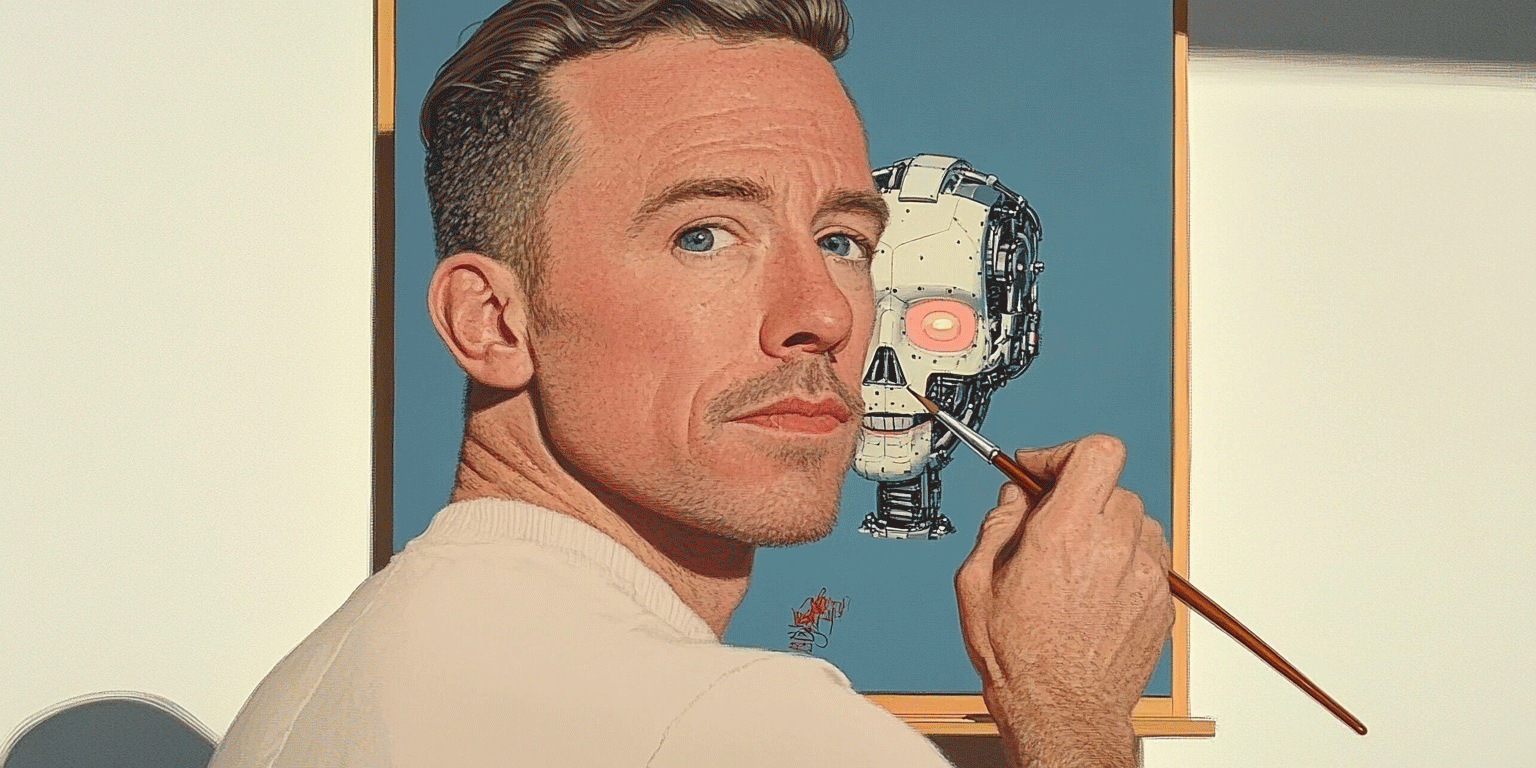Upgrading my Operating System to Design Cyborg
Not too long ago, the idea of artificial intelligence designing a brand identity sounded like a bad sci-fi subplot. Today, it’s just another Tuesday. AI tools are everywhere, and they’re making logos, generating layouts, and even suggesting color palettes faster than you can say “brand guidelines.”
So, should designers be panicking? Should we pack up our Pantone swatches and let the robots take over?
Well… not exzackly.
The Rise of AI in Design: A Canva and ChatGPT Lovechild
If you’ve been anywhere near the internet lately, you’ve seen AI design tools popping up like targeted ads for things you whispered about but never searched. There’s Adobe Firefly, MidJourney, DALL·E, Runway ML, and an army of others that can whip up visuals in seconds.
Want a logo? AI’s got you. Need a social post? AI’s on it. Dreaming of a website? AI will draft one before your coffee cools. And yes, the results are often shockingly good—if you don’t look too closely.
Because here’s the catch: AI can generate a design. It just doesn’t know why it works.
AI Has Speed—You Have Strategy
Let’s be real: AI is a fantastic assistant. It can brainstorm, iterate, and provide you with 20 versions of a design in the time it takes to pick a Spotify playlist. However, AI doesn’t grasp brand strategy, human emotion, or the nuances that contribute to great design.
A strong brand isn’t just about looking cool—it’s about evoking trust, creating recognition, and communicating the right visual language to the appropriate audience. That’s where human designers still have the advantage.
Anyone can prompt an AI to “Make a minimalist logo for a luxury skincare brand.” But only a trained designer will:
• Understand how brand perception influences font and color choices.
• Recognize when a design is too generic or trendy to stand out.
• Curate AI-generated options into something that feels right.
• Adapt AI work into a cohesive, multi-channel campaign.
AI is a tool, not a designer. And just as Canva made “everyone a designer” (until they needed real brand consistency), AI will produce a flood of decent yet uninspired work.
How Designers Can Win in the AI Era
Use AI as an Accelerator, Not a Replacement: Treat AI like an intern—quick, enthusiastic, but not to be left unsupervised. Allow it to handle the grunt work (mood boards, rough drafts, quick mockups), and then apply your expertise.
Curate Like a Pro: The secret isn’t about making AI do the work, but knowing what to keep and what to discard. Curation is the crucial difference between AI-generated fluff and something that truly works.
Lean Into Strategy and Brand Thinking: The most valuable designers aren’t just pushing pixels; they’re crafting brand stories. If you can explain why a design decision matters, you’re far ahead of any algorithm.
Keep Learning: AI is evolving rapidly. So should you. Stay updated on new tools, understand their strengths an
d weaknesses, and find ways to make them benefit you.
The Future: AI + Designers = Better Design
AI isn’t here to replace designers. It’s here to shake things up. The future of design belongs to those who can blend AI efficiency with human creativity. Understanding how to leverage new tools and use to your advantage is what we humans do best. So if you can't beat 'em, join 'em.



